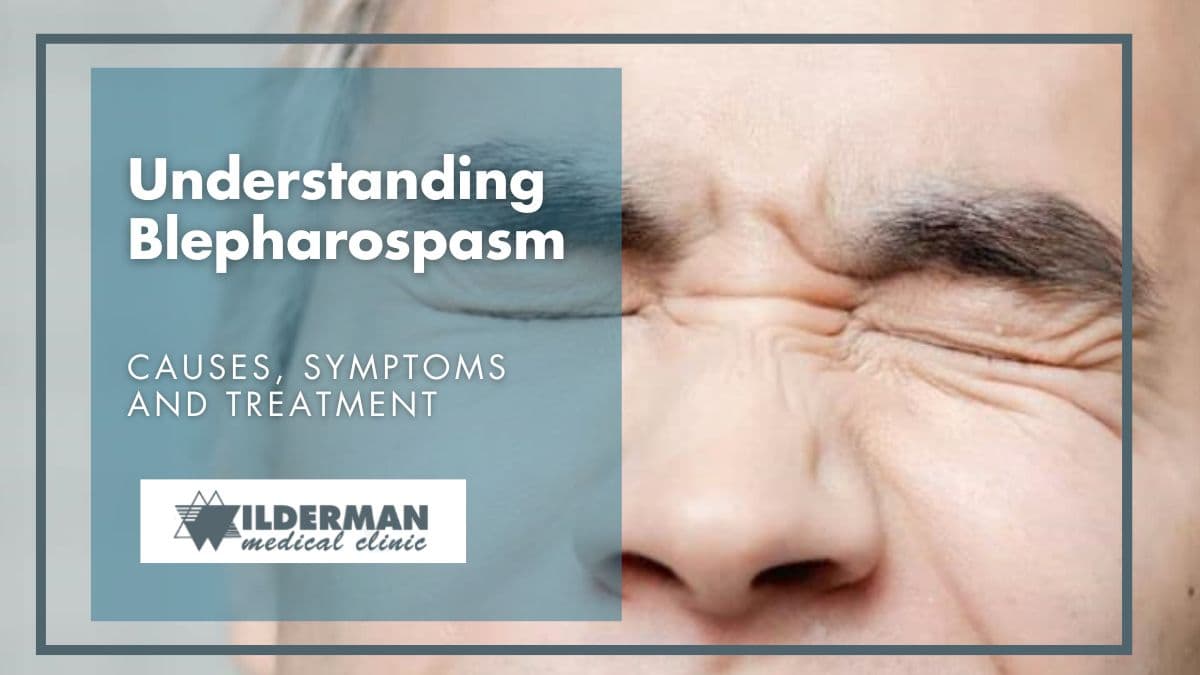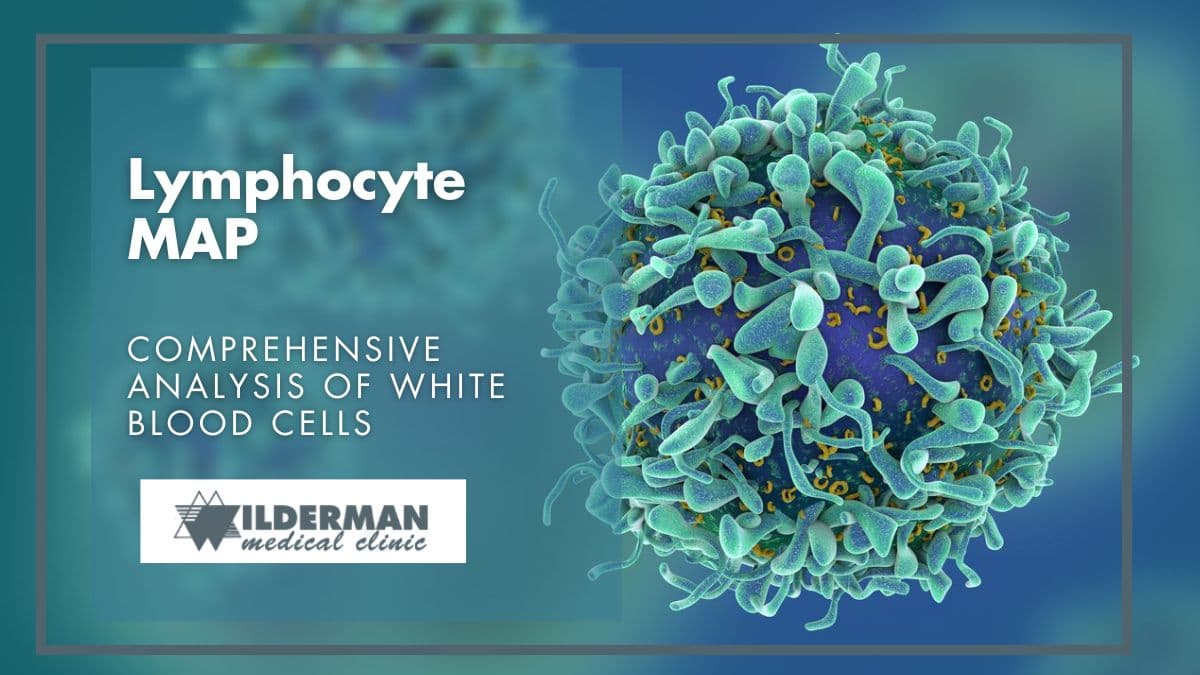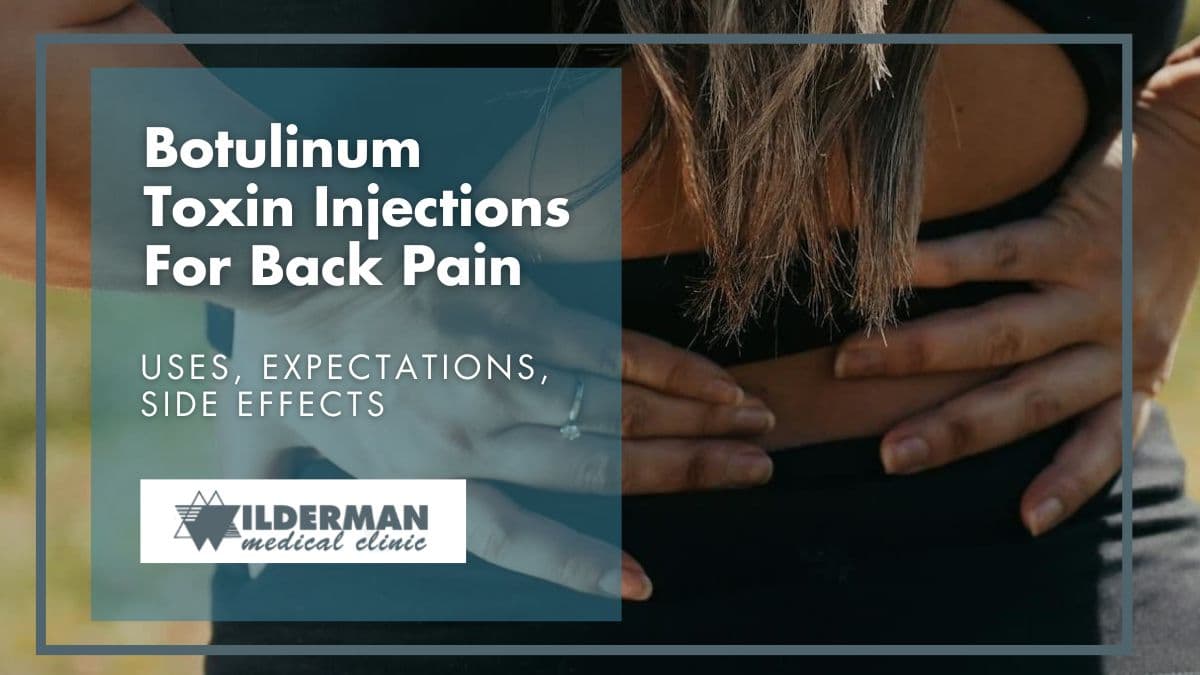Understanding Blepharospasm: Causes, Symptoms and Treatment

Blepharospasm is a condition that affects the muscles controlling your eyelids. It starts with small twitches and can make it hard to open your eyes. Injections can help many people feel better.
If it gets worse, some may need to make changes in their daily life because of trouble seeing.
What is Blepharospasm?
Blepharospasm is a kind of problem in the brain that makes the muscles around your eyelids act strangely. This leads to blinking or squeezing your eyes without you wanting to do it. In serious cases, your eyes might even close forcefully. The word “blepharospasm” comes from Greek words, where “blepharo” means eyelid, and “spasm” means a sudden and uncontrollable muscle contraction.
This issue is a type of movement disorder called focal dystonias, where muscles act in unusual ways, causing repetitive movements or strange positions. Blepharospasm specifically affects the muscles near the eyes and can make it hard for people to see, do everyday tasks, and live their lives comfortably.
How bad blepharospasm gets can be different for each person, from a little annoyance to not being able to see well at all.
Types of Blepharospasm
Blepharospasm can be classified into different types based on various factors, including the underlying causes and associated conditions. The two main types are primary (or benign essential) blepharospasm and secondary blepharospasm.
Primary (Benign Essential) Blepharospasm:
This is the most common type of blepharospasm and occurs without any apparent underlying neurological or ocular condition. It is often considered idiopathic, meaning that the exact cause is unknown.
The involuntary muscle contractions and excessive blinking primarily affect the eyelids. This form of blepharospasm usually begins gradually and tends to worsen over time.
Secondary Blepharospasm:
Secondary blepharospasm is associated with other neurological or ocular conditions. In these cases, the involuntary muscle contractions in the eyelids are a symptom of an underlying disorder.
Secondary blepharospasm can be linked to conditions such as Parkinson’s disease, hemifacial spasm (involuntary contractions on one side of the face), dystonia, or tardive dyskinesia (a side effect of certain medications).
In addition to these broad classifications, blepharospasm can be further categorized based on the severity and specific characteristics of the symptoms. For example:
- Mild Blepharospasm: Involves occasional blinking and mild discomfort.
- Moderate Blepharospasm: More frequent blinking and increased sensitivity to light, affecting daily activities.
- Severe Blepharospasm: Persistent and forceful closure of the eyelids, potentially leading to functional blindness.
Epidemiology: Who is at risk?
- Age: Blepharospasm typically manifests in middle to late adulthood. The majority of cases are diagnosed in individuals aged 50 to 70 years.
- Gender: There is a notable gender difference in the prevalence of blepharospasm. Women are more commonly affected than men. The reasons for this gender discrepancy are not entirely clear and may involve hormonal or genetic factors.
- Genetics: There is evidence to suggest a genetic predisposition to blepharospasm. Some cases of the disorder have been reported to run in families, indicating a potential hereditary component.
- Environmental Factors: Certain environmental factors and triggers may play a role in the development or exacerbation of blepharospasm. Stress, fatigue, and exposure to bright lights are among the factors that can potentially contribute to the onset or worsening of symptoms.
- Other Medical Conditions: Secondary blepharospasm, which is associated with underlying neurological conditions, may occur in conjunction with other disorders such as Parkinson’s disease, dystonia, or tardive dyskinesia. Individuals with these conditions may have an increased risk of developing blepharospasm.
It’s important to note that while these demographic factors may be associated with a higher likelihood of developing blepharospasm, the condition can still occur in individuals who do not fit these patterns. The precise interplay of genetic and environmental factors leading to blepharospasm is not fully understood.
Symptoms
Common symptoms of blepharospasm include:
- Excessive Blinking: Individuals with blepharospasm often experience frequent and uncontrollable blinking. The blinking may be more pronounced in certain situations, such as when exposed to bright lights or during periods of stress.
- Forceful Closure of the Eyes: In more severe cases, blepharospasm can lead to forceful closure of the eyelids. This can significantly impair vision and daily activities, making it challenging for affected individuals to perform routine tasks.
- Sensitivity to Light (Photophobia): Many people with blepharospasm report increased sensitivity to light. Exposure to bright lights can trigger or worsen the symptoms, causing discomfort and exacerbating involuntary contractions.
- Functional Impairment: As the condition progresses, the involuntary muscle contractions can interfere with daily activities, including reading, driving, watching television, or using a computer. Functional impairment can have a substantial impact on an individual’s quality of life.
- Social and Emotional Impact: Living with blepharospasm can lead to social and emotional challenges. The visible symptoms may attract attention and, in some cases, result in social discomfort. Additionally, the functional limitations can contribute to frustration and anxiety.
- Symptom Variability: The severity and frequency of symptoms can vary among individuals. Some may experience intermittent and milder symptoms, while others may have persistent and more pronounced contractions.
Etiology: Causes
The exact etiology or causes of blepharospasm are not fully understood, and the condition is often considered idiopathic, meaning that the underlying cause is unknown. However, several factors, both genetic and environmental, are believed to contribute to the development of blepharospasm. Here are some factors that may play a role:
Genetic Factors: Some cases of the disorder have been reported to run in families, indicating a potential hereditary component. However, the specific genes involved in the development of blepharospasm have not been conclusively identified.
Neurological Dysfunction: Blepharospasm is thought to involve dysfunction in the basal ganglia, a group of nuclei deep within the brain that plays a crucial role in controlling movement. Abnormalities in neurotransmitter signaling, particularly involving dopamine, have been implicated in the development of involuntary muscle contractions.
Environmental Triggers: Stress, fatigue, and exposure to bright lights are among the factors that have been associated with the onset or worsening of symptoms. However, these triggers may vary among individuals.
Secondary Causes: In some cases, blepharospasm can be secondary to other neurological conditions. For example, it may occur in conjunction with conditions such as Parkinson’s disease, dystonia, or tardive dyskinesia (a side effect of certain medications). In these instances, the underlying condition contributes to the development of blepharospasm.
Neurochemical Imbalance: Imbalances in neurotransmitters, the chemical messengers in the brain, may contribute to the development of blepharospasm. While the specific mechanisms are not fully understood, alterations in the normal balance of neurotransmitters like acetylcholine and dopamine are thought to play a role.
It’s essential to recognize that the interplay of genetic and environmental factors leading to blepharospasm is complex and may vary among individuals. Research in this field is ongoing, and scientists continue to explore the underlying mechanisms of the disorder.
Pathophysiology: Changes within the body
Blepharospasm happens because the part of the brain controlling movement called the basal ganglia, doesn’t work properly. This causes involuntary muscle contractions in the eyelids, leading to blinking and eye closure.
Changes in the brain’s messengers, like acetylcholine and dopamine, are part of this problem.
People with blepharospasm might also be sensitive to things like stress and bright lights, making their symptoms worse. It’s a bit like a loop in the brain causing these uncontrollable contractions, but researchers still figuring out exactly how it works.
Risk factors
Here are some potential risk factors associated with blepharospasm:
- The risk increases with age, and the majority of cases are diagnosed in individuals aged 50 to 70 years.
- Individuals with a family history of blepharospasm may be at a higher risk.
- Individuals with a higher susceptibility to these triggers may be at an increased risk.
- Underlying neurological Conditions such as Parkinson’s disease, dystonia, etc. may increase the risk of developing secondary blepharospasm. In these cases, the underlying neurological condition contributes to the manifestation of blepharospasm.
- Individuals with a history of other movement disorders may be at an increased risk of developing blepharospasm. The relationship between different movement disorders is complex, and shared mechanisms may contribute to the development of these conditions.
- Individuals with a history of certain eye conditions may be at a slightly higher risk of developing blepharospasm. However, the association between specific eye conditions and blepharospasm is not well-defined.
According to a recent study, additional factors that might be connected to benign essential blepharospasm include residing in a city or town setting, engaging in a job with a stressful “white collar” lifestyle, and regularly reading or using electronic screens.
Diagnosis
Here are the key components of the diagnostic process:
Medical History: The healthcare provider will take a detailed medical history, including information about the onset and progression of symptoms, any factors that may trigger or worsen symptoms, and a family history of neurological disorders.
Clinical Examination: A thorough physical and neurological examination is conducted to assess muscle tone, reflexes, and coordination. The focus is on the muscles controlling the eyelids and surrounding areas to observe any involuntary movements.
Eyelid Function Assessment: The healthcare provider will evaluate eyelid function, looking for signs of excessive blinking, forceful closure of the eyes, and sensitivity to light. The degree of functional impairment will be assessed.
Electromyography (EMG): Electromyography involves the placement of small electrodes on the skin to measure the electrical activity of muscles. This test can help confirm the presence of abnormal muscle activity associated with blepharospasm.
Imaging Studies: While imaging studies such as magnetic resonance imaging (MRI) are not typically required for the diagnosis of primary blepharospasm, they may be ordered to rule out other potential causes of involuntary muscle contractions, such as structural abnormalities or lesions in the brain.
Differential Diagnosis: The healthcare provider will consider other conditions that may present with similar symptoms, such as facial nerve disorders, myasthenia gravis, or other movement disorders. The goal is to distinguish blepharospasm from these other conditions.
Botulinum Toxin (Botox) Test: In some cases, a diagnostic test using botulinum toxin injections may be employed. Botulinum toxin injections are a common treatment for blepharospasm, and if the symptoms improve significantly after these injections, it can help support the diagnosis.
Psychosocial Assessment: Since blepharospasm can impact an individual’s daily life and well-being, a psychosocial assessment may be included to understand the emotional and social aspects of living with the condition.
Once the diagnosis is confirmed, the healthcare provider can work with the individual to develop a personalized treatment plan.
Treatment
While there is no cure for blepharospasm, various treatment options aim to manage symptoms and improve quality of life. Common approaches include:
Botulinum Toxin Injections (Botox): Effective in temporarily paralyzing affected eye muscles, reducing involuntary contractions. Results last several months, requiring repeat injections.
- Oral Medications: Certain drugs, like anticholinergics, may be prescribed to control muscle spasms. Medication choice depends on individual response.
- Sensory Tricks: Some find relief through voluntary movements or sensory stimuli, like touching the eyelid, and temporarily alleviating muscle contractions.
- Surgery: Surgical options include myectomy (removal of specific eyelid muscles) or deep brain stimulation (implanting electrodes to modulate neural activity) for severe cases.
- Physical Therapy: Techniques such as biofeedback and facial exercises aim to improve muscle control and reduce spasms.
- Lifestyle Modifications: Managing stress, ensuring adequate rest, and avoiding bright lights can help minimize triggers.
- Supportive Therapies: Psychosocial support, including counseling and support groups, aids in coping with social and emotional aspects of living with blepharospasm.
Close collaboration with healthcare providers is crucial. Regular follow-ups monitor symptoms, adjust treatment, and address concerns. A multidisciplinary approach involving neurologists, ophthalmologists, and other professionals ensures comprehensive care for those with blepharospasm.
Takeaway
Blepharospasm, a neurological disorder impacting eyelid muscles, involves involuntary blinking, squeezing, and forceful eye closure. It predominantly affects middle-aged to older individuals.
Symptoms vary in severity, and diagnosis involves a comprehensive assessment, including medical history and tests. While its exact causes, involving genetic and neurochemical factors, remain unclear, treatment options like botulinum toxin injections, medications, and surgical interventions aim to manage symptoms.
Lifestyle adjustments and psychosocial support complement treatment, contributing to improved quality of life for those affected. Regular collaboration with healthcare providers ensures ongoing care and adjustment of treatment plans for comprehensive management.
Reference
National Center for Biotechnology Information (NCBI). Bookshelf. Blepharospasm. https://www.ncbi.nlm.nih.gov/books/NBK560833/.
Healthline. Blepharospasm (Eyelid Twitch): Causes, Symptoms, and More. https://www.healthline.com/health/eyelid-disorders/blepharospasm#fa-qs.
Cleveland Clinic. Blepharospasm (Eyelid Twitch): Overview. https://my.clevelandclinic.org/health/diseases/21546-blepharospasm#overview.
National Eye Institute (NEI). Blepharospasm. https://www.nei.nih.gov/learn-about-eye-health/eye-conditions-and-diseases/blepharospasm.
Mayo Clinic. Eye Twitching: Causes. https://www.mayoclinic.org/symptoms/eye-twitching/basics/causes/sym-20050838.
Patient.info. Blepharospasm. https://patient.info/doctor/blepharospasm.
Need to get in touch?
Address: 8054 Yonge Street Thornhill, Ontario L4J 1W3
Phone: (905) 886 1212
Latest articles
April 29, 2024
April 29, 2024
April 29, 2024
April 29, 2024
April 29, 2024





